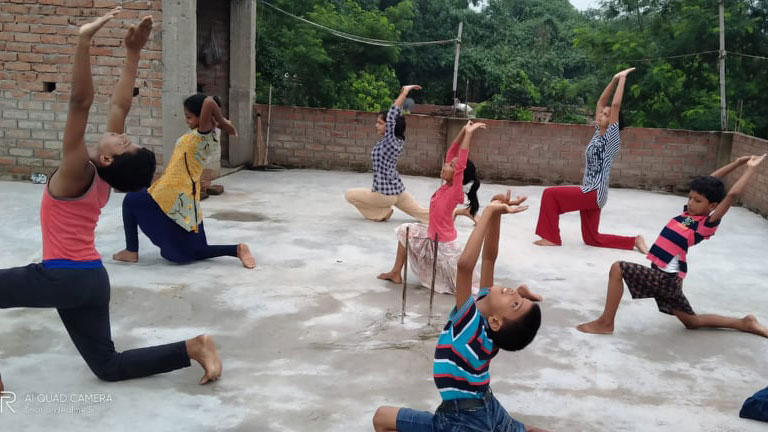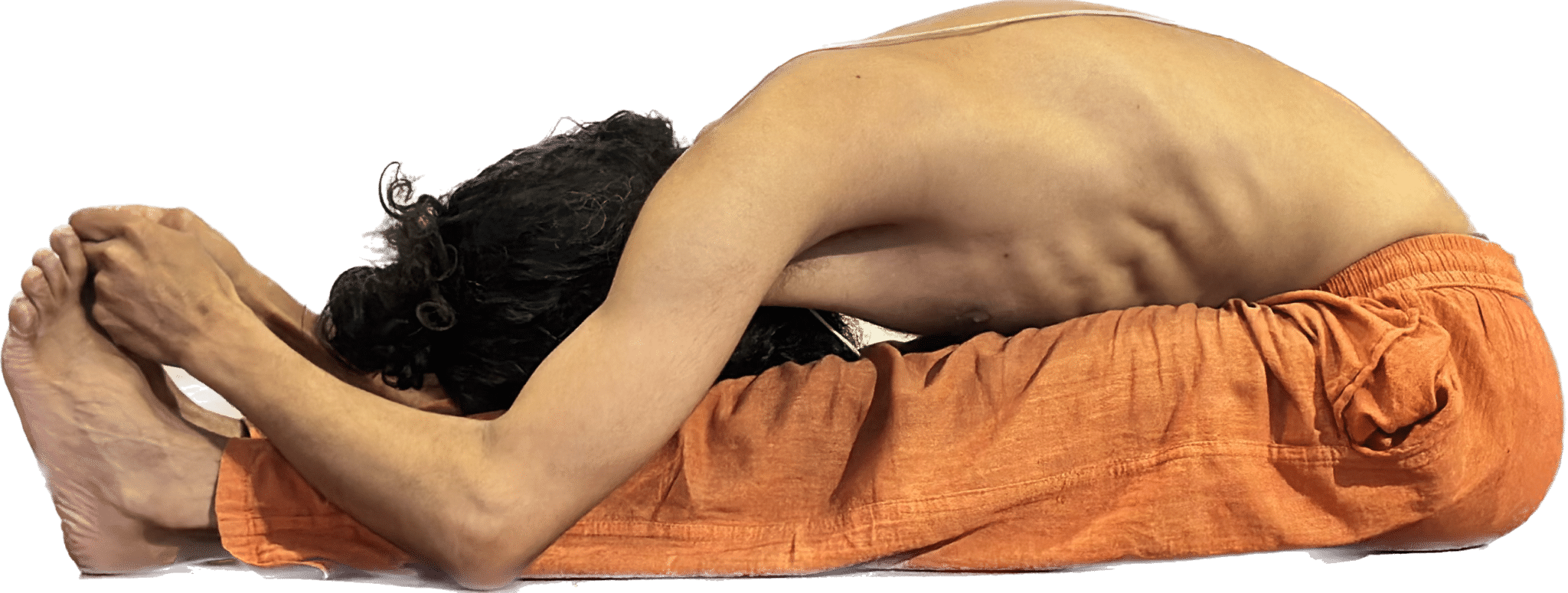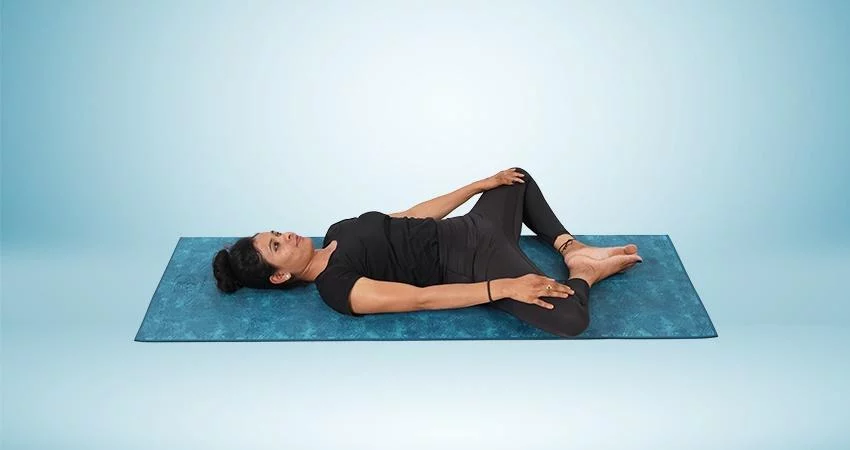
30 May 2025 Himalayan Yoga Academy
Yoga is a great way to support overall well-being by building confidence, balance, and self-awareness. It is a natural way to enjoy good physical, emotional, and mental health in this busy world. Yoga is fit for all age groups, as its multiple benefits help people stay healthy and clear-minded. Among several age groups, Yoga for Teens or Adolescents also marks a significant importance in their growing period of physical, emotional, and mental changes. Teens, whether girls or boys, face different challenges such as bodily and hormonal changes, educational stress, and socializing. As changes happen, Yoga for Teens proves to be a life-changing tool to nurture their physical, emotional, and mental growth.
Why Yoga for Teens?
Yoga for teens is not only about physical and mental growth, but it’s also for emotional growth. Teens find it hard to deal with rapid emotional changes in this fast-paced, growing world. The instant changes in relationships are making it tougher to accept the reality as it is. Yoga for teens is here to support them in their overall growth and provide insight to reflect as well as accept themselves.
a. Improves Self-Esteem and Body Positivity
Yoga improves self-esteem and body positivity by allowing one to accept oneself. It further enhances in building of a healthier and compassionate relationship. The self-acceptance boosts self-esteem and embraces the positive outcomes in a life.
b. Supports Emotional Balance
Hormonal changes during puberty cause mood swings, anxiety, and irritability. It is a natural process, but for teens, several doubts arise within themselves. This leads to an increase in stress. Yoga promotes emotional stability by enhancing calmness and emotional balance.
c. Increases Concentration
Regular yoga practices develop a habit of consistency and build focus. The sharpened focus helps to increase concentration. As a result, it gives clarity to perform any tasks mindfully and make proper decisions. An ability to manage everything on time also develops.
d. Builds Physical Strength and Flexibility
Daily Yoga practices build physical strength, improving the right body postures. It further increases flexibility, allowing the body to stretch properly and be free of any bodily pains or injuries. Not only does the flexibility in the body grow, but the mind also develops, which supports thinking more actively.
e. Inspires Mindful Living
Regular Yoga practice inspires mindful living as it instills values like patience, resilience, empathy, and gratitude. These values support building respectful relationships and make the right choices relating to body, mind, and the soul.

Quick Tips before Starting the Yoga Journey
- Select age-appropriate classes with an experienced yoga instructor who understands how to work with teens or adolescents.
- Practice Yoga in such an environment where you feel safe and comfortable to explore new poses and express yourself openly.
- Wear comfortable clothes for the free movement of the body while practicing yoga poses.
- Consistency is a key to making a difference. Thus, be consistent and practice even if it is only for 10–15 minutes daily.
- To keep Yoga sessions engaging and entertaining, integrate fun activities such as soothing music, storytelling, or themed Yoga classes.
- Enjoy the journey and don’t only focus on the result, thus stay patient.
Also Read: Yoga for Kids
Beginner Yoga Poses for Teens
A. Tadasana (Mountain Pose)
Steps
- Stand on a mat with a straight-legged posture, the feet together, heels slightly apart, and wide-set toes.
- Draw your weight evenly into the body and slowly lift your kneecaps.
- Open your chest wide, straighten your spine, and keep your shoulders aligned over your hips.
- Stretch your hands straight up with palms facing forward.
- Tilt the crown of the head upwards without tilting the chin upwards, but keeping it parallel to the ground.
- Remain in a steady pose for 15-30 seconds, breathing slowly.
- Bring your hands down and back into a normal standing position.

Tadasana Benefits
- Increases body awareness, promoting better balance and coordination
- Proper body alignment improves blood circulation and respiration
- Calms the mind and improves concentration, promoting mental focus
Tadasana Cons
- Avoid knee locking for those people who have knee problems
- Improper alignment of hips, feet, or shoulders causes strain in the lower back or knees
B. Cat-Cow Pose (Marjari-Bitilasana)
Steps
Set yourself in Bharmanasana (tabletop position), keep the hips directly above the knees, and the hands shoulder-width apart.
For Bitilasana (Cow Pose):
- Inhale as you allow the tummy to drop toward the mat, lifting your chest and tailbone.
- Open your chest and bend your back, looking slightly upward.
For Marjari (Cat Pose):
- Exhale as you round your back toward the ceiling.
- Tuck your chin in toward your chest and draw your navel toward your spine.
- Extend the stretch by pressing the mat with your hands and knees.
- Continue with these two postures, consecutively, in sync with your breath.
- Practice 5-10 rounds of the Marjari-Bitilasana pose effortlessly with every inhale and exhale.

Marjari-Bitilasana Benefits
- Promotes better breathing sequences
- Stimulates internal organs for a youthful and energetic body
- Improvement in digestion increases metabolism, helping in weight loss
Marjari-Bitilasana Cons
- Inappropriate practice causes lower back or spine irritation
- Overstretching causes stiffness in the neck or back
C. Child’s Pose (Balasana)
Steps
- Kneel on the mat, big toes touching.
- Keep your knees wide apart.
- Sit back on your heels.
- Come to the table pose.
- Exhale and lower your hips to the heels.
- Lower your forehead on the mat.
- Keep your knees in a comfortable position.
- Stretch your arms in front, stacked under the forehead or alongside your body.
- Breathing slowly, hold for 1–3 minutes.
- Slowly inhale up, release, and get back to a seated position.

Balasana Benefits
- Activates the parasympathetic nervous system
- Supports blood pressure regulation
- Promotes deep, cooling breaths and keeps the mind calm
Balasana Cons
- Avoid those with knee problems or hip tightness
- This asana may raise cranial pressure in some hypertensive individuals
D. Paschimottanasana (Seated Forward Bend)
Steps
- Sit on the mat and bring both legs in front of you with pointed toes inward.
- Keep your back straight, lengthen the spine, and expand the chest.
- Inhale and raise both hands, extending the spine further.
- Bring the hands in alignment with the ears.
- Exhale, bring the chin out, and bend down as far as you can.
- Reach for your feet, ankles, or toes to improve your flexibility.
- Bring your elbows down on either side of the feet.
- Bring your forehead to rest on your legs.
- Raise your hands slowly in line with your ears.
- Inhale, extend the spine upward.
- Exhale, bring both hands down, and release.

Paschimottanasana Benefits
- Promotes youthfulness by giving clarity and flexibility to the mind
- Stretching improves flexibility in the body
- Eases the nervous system and relieves pain in the hamstring, calf, neck, and lower back muscles
Paschimottanasana Cons
- An incorrect practice causes strain on the lower back, shoulders, neck, or hamstrings
- Be careful while stretching too much, as there’s a risk of rounding the back
E. Supta Baddha Konasana (Reclining Bound Angle Pose)
Steps
- Sit with a straight spine on a mat.
- Bend your knees and bring your feet’ soles together in a diamond shape.
- Slowly lie on your back on a mat.
- Place a cushion, yoga blocks, or blankets under each knee if needed.
- Beginners can use a bolster or pillow on their back for support.
- Close your eyes, stay for 5–10 minutes, breathing slowly and deeply.
- Feel Relaxed while exhaling.
- Slowly come up using your hand’s support.

Supta Baddha Konasana Benefits
- Gently opens the hips and pelvis
- Calms the nervous system and reduces stress
- Relieves menstrual cramps and tension, and controls PCOS symptoms in girls
Supta Baddha Konasana Cons
- Not suitable for those with knee or hip injuries
- Slightly uncomfortable for those with lower back pain and those with tight hips
Also Read: Top 7 Yoga Poses for Youthfulness
Conclusion
Teens or adolescents are a phase where they often get drawn in many directions. Yoga for teens is a boon as it provides an opportunity for them to understand their body and themselves. It helps to reflect within and reconnect to their inner self for their betterment. Yoga inspires teens to build confidence within themselves by nurturing strength, self-awareness, and quietness. Furthermore, it leads to greater mental clarity and resilience to move ahead positively in their lives.
Written By: Anjali B
